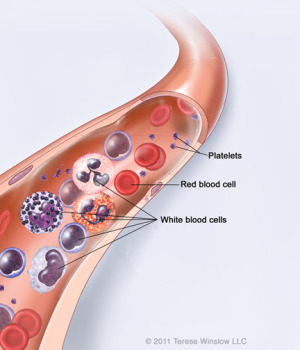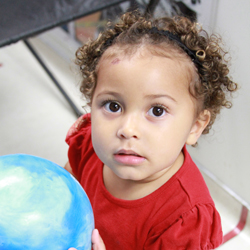About Acute Myeloid Leukemia (AML)
Acute myeloid leukemia (also called acute myelogenous leukemia or AML) in children is a cancer of the blood that starts in the bone marrow and spreads to the bloodstream. It is more common in adults, but each year approximately 730 new cases of AML are diagnosed in children (age 0-19) in the United States.
Leukemia begins in the bone marrow. Bone marrow is the spongy tissue located inside the bones, where blood cells are made. Leukemia starts when a single, young white blood cell, called a "blast" develops a series of mutations that allow it to multiply uncontrollably. Eventually, the blasts accumulate and crowd out normal cells in the bone marrow. They can also spill out into the bloodstream, and invade the lymph nodes, brain, skin, liver, kidney, ovaries, testes, and other organs. Occasionally they form a solid tumor called a "chloroma."
 Signs and Symptoms of Acute Myeloid Leukemia
Signs and Symptoms of Acute Myeloid Leukemia
Leukemia cells "crowd out" the normal blood cells. The decrease in normal cells causes the symptoms of leukemia, which may include:
- Fatigue and being pale results from a decreased number of red blood cells, known as anemia
- Fever due to the disease itself or from infection because there are a decreased number of healthy white blood cells, known as neutropenia
- Bruising or bleeding from decreased platelets, known as thrombocytopenia
- Petechiae, a rash of tiny red spots caused by low platelet levels (platelets help stop bleeding)
- Bone pain that is sometimes associated with swelling of the joints
- Weight loss or loss of appetite
- Frequent infections, because the body's normal immune system cells are crowded out by cancer cells
The signs and symptoms of leukemia are the same as more common childhood illnesses, such as colds or flu, and many children are treated for those other illnesses before leukemia is diagnosed.



